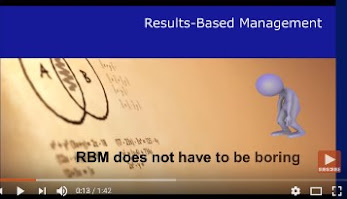Greg Armstrong --
Level of Difficulty: Moderate to complex
Primarily useful for: Project managers, national partners
Length: 23 documents, 1,337 p.
Most useful: SIDA, AusAid and DANIDA guides to the LFA
Limitations: Mounds of bureaucratic language in many of the bilateral documents make it difficult to identify and take effective guidance from potentially useful material.
[Some links updated, April, 2012, June 2012 and June 2018 - The aid agencies remove documents regularly from their own websites, but readers may sometimes be able to find them at other sites, with some diligent online search. One site to try, if some of the above links do not work, is the Project Management for Development Organizations Open Library Site, which archives a lot of useful material.]
Who these materials are for
As bilateral donors consider offloading responsibility for delivering aid programmes to multilateral agencies, it pays to examine what standards these UN agencies use for results reporting. Two earlier posts looked at the relatively weak results reporting in many UN agencies, and questioned why the bilateral agencies don’t hold the UN agencies to higher standards. This third post looks at how three major bilateral donors define their results frameworks.
Level of Difficulty: Moderate to complex
Primarily useful for: Project managers, national partners
Length: 23 documents, 1,337 p.
Most useful: SIDA, AusAid and DANIDA guides to the LFA
Limitations: Mounds of bureaucratic language in many of the bilateral documents make it difficult to identify and take effective guidance from potentially useful material.
[Some links updated, April, 2012, June 2012 and June 2018 - The aid agencies remove documents regularly from their own websites, but readers may sometimes be able to find them at other sites, with some diligent online search. One site to try, if some of the above links do not work, is the Project Management for Development Organizations Open Library Site, which archives a lot of useful material.]
Who these materials are for
Project managers, evaluators and national partners trying to understand how SIDA, AusAid and Danida define results and frame their approaches to RBM.
Background – Confusion in UN results definitions
In my previous two posts, I examined how UN Results-Based Management frameworks can provide the rationale for some agencies to avoid reporting on results, and to focus instead simply on describing their completed activities. To a large extent this confusion arises out of the ambiguous terminology used in Results-Based-Management – words that mean different things to different agencies even as they agree to use them in common. This is complicated further in the UN case when agencies apply the same terms to near-term results at the project level as are applied at the aggregated country level. As I noted in the second post, vague definitions for results, even when they are ‘harmonised’, too frequently seem to lead unmotivated or inattentive agency heads and project managers to the path of least resistance: project reporting on completed activities and not results.
This third and a subsequent fourth post in this series briefly survey how the results frameworks of 7 bilateral aid agencies compare to those of the OECD/DAC and UNDAF. This review is only of those agencies where information, in English, could be obtained in reasonable time from their own or associated -- and publicly accessible -- websites. Those already familiar with the discussion of the problems in the UN framework may want to skip directly to the review of the bilateral agencies.
I am assuming, for the moment, a general agreement that “cause and effect” is not a reasonable description of what is intended by a results chain, but rather that it is a notional concept of how activities can contribute to intended results. In this context, this post examines how results chains are presented in documents from the
- OECD/DAC,
- SIDA,
- AusAid, and
- Danida.
USAID, DFID, CIDA and EuropeAid results frameworks will be analysed in the final post in this series.






